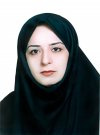| نویسندگان | زینب سادات سیدی خمبی,زهره زهرایی,فرشته جوکارکاشی |
|---|
| همایش | اولین همایش شیمی زیست فن اوری |
|---|
| تاریخ برگزاری همایش | 2016-3-6 |
|---|
| محل برگزاری همایش | تهران |
|---|
| نوع ارائه | سخنرانی |
|---|
| سطح همایش | ملی |
|---|
چکیده مقاله
Introduction: The textile industry wastewater has been identified as one of the major sources of water pollution [1]. In recent years numerous studies were carried out for isolation and screening of decolorizing bacteria from textile effluent [2, 3]. This work describes the isolation and characterization of new and various heterotrophic bacteria from textile effluent. Methods: For this purpose 6 wastewater and 2 contaminated soil samples were collected aseptically from Kashan Textile Industry. Temperatures, pH and total dissolved solids of samples were measured. Isolation of bacteria was carried out on nutrient agar (NA) plates at pH range of 8 to11. Serial dilution via spread plate method was applied to obtain single culture. The heterotrophic bacteria were identified on the basis of their physiological and morphological attributes.
Results: samples were in different pH levels (8 to 11), different temperatures (28 to 50°C) and total dissolved solids (2292 to 18260 ppm). A total of 112 bacterial isolates were obtained including 31 gram- negative (21 bacilli, 2 coccobacilli, 6 cocci, 2 spirillum) and 81 gram- positive (60 bacilli, 5 coccobacilli, 16 cocci). Morphological variation was observed when colonies were compared including smooth, circular, low-convex, transparent or translucent and different colors like red, orange-red, pale-pink, yellowish, cream or white.
Conclusion: This is the study in which the suitable approach has been applied to the identification of heterotrophic bacteria. Bacterial isolates could effectively be used in development of alternative and eco-friendly method for decolorization and biodegradation of textile dyes from industrial effluent.

